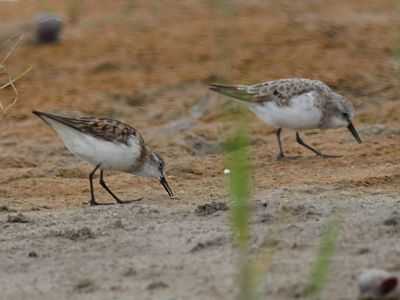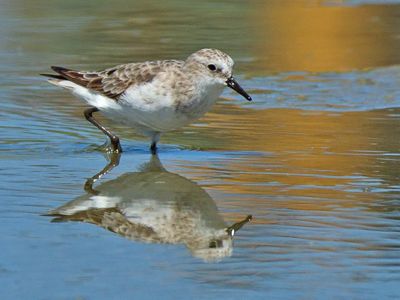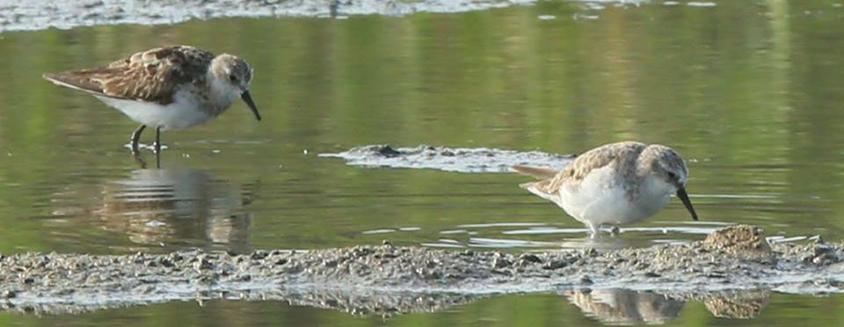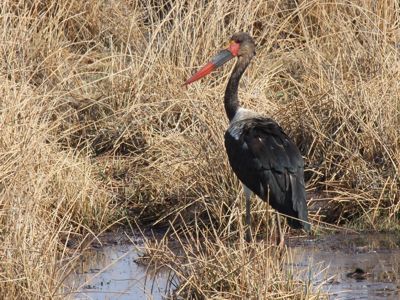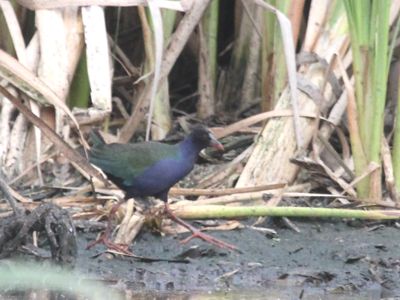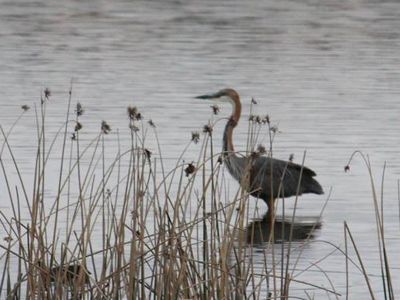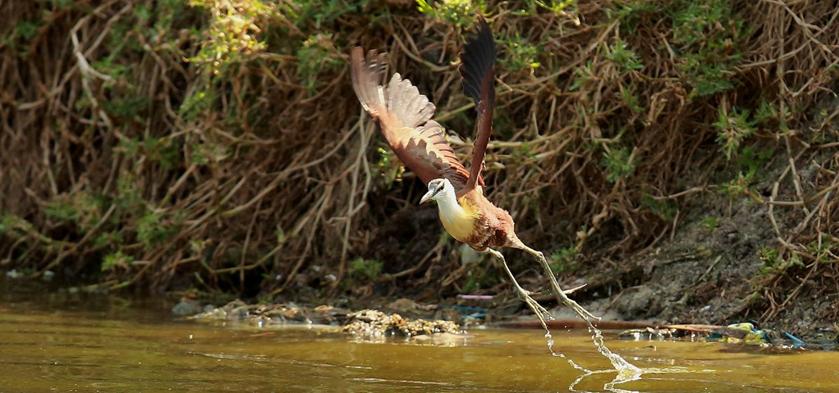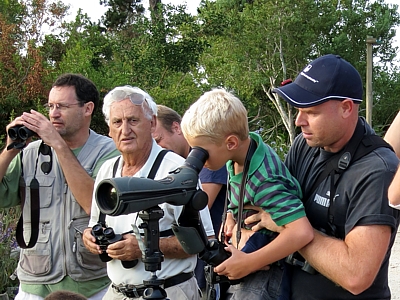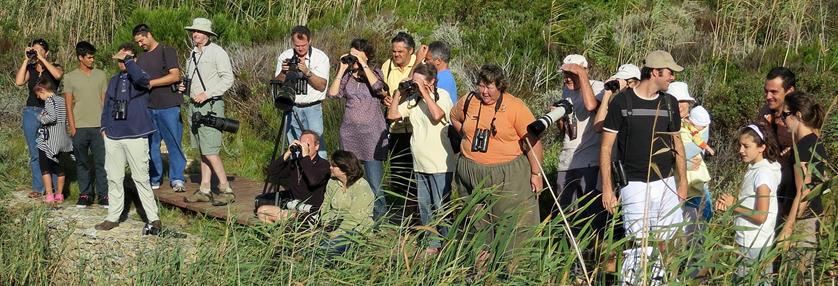SA Rare Bird News Report - 14 September 2015
Trevor Hardaker
| ||||
SA Rare Bird News is proud to be associated with the following brands: | ||||
|
|
| ||
|
|
| ||
| ||||
This is the Southern African Rare Bird News Report issued at 20h00 on Monday, 14 September 2015. Information has been gleaned from various websites, email groups as well as from individual observers who have passed on their sightings. This report cannot be taken as being totally comprehensive as it is based only on information made available at the time of writing. All bird sightings reported here are reported in good faith based on information as provided by the observers. Any inaccuracies are totally unintentional and the writer cannot be held liable for these. For those who may have only joined the group recently and are interested in finding out what has been seen in the past, previous reports can be viewed at http://groups.google.co.za/group/sa-rarebirdnews | ||||
|
| |||
Before starting with the actual report, this is just to let everyone know that there will not be a formal report going out on Thursday evening as I have to give a talk to the Tygerberg Bird Club that evening, so will not have any time available to prepare the report.
On to some news and it's only fair that we start in Mozambique for a change where the big news was the discovery of a RED-NECKED STINT in Maputo. Initially located on a flooded football pitch opposite the Adil Water Park in Triunfo on Thursday, it took a little while before the identification was finally resolved. The bird continued to show throughout the weekend and was still present there this morning and drew a number of cross-border twitchers to see it, given that the last twitchable bird was well over a decade ago. If it continues to show this week, there is every chance that Maputo will see a bit of an influx of subregion listers arriving there next weekend as well.
This species group is notoriously tough to separate and, given the state of moult, plumage characters are of little value at the moment. However, structure, in this case, is quite important and, looking at the photos below, one can see the typically shorter legs of the Red-necked Stint when compared to the Little Stints (particularly the tibia), the somewhat more thickset and shorter neck and the proportionately larger head, all useful features in separating these two species. When observed in the field, the feeding behaviour is also slightly different, but this is really only noticeable when observing the birds side by side. | ||||
|
| |||
|
| |||
Red-necked Stint (on right) in Maputo © Gary Allport | Red-necked Stint in Maputo © Niall Perrins | |||
|
| |||
| ||||
Red-necked Stint (on right) in Maputo © Tisha Greyling | ||||
| ||||
| ||||
Red-necked Stint in Maputo © Johann Grobbelaar | ||||
|
| |||
| ||||
Maputo’s first ever “mass” twitch © Gary Allport | ||||
|
| |||
Meanwhile, across in Limpopo Province, the RUPPELL'S VULTURE at Blouberg Nature Reserve was also still attracting a lot of attention over the weekend and was seen at the nest site on both days where it showed to a good number of birders who had travelled up to see it.
Down in Gauteng, there was also some excitement yesterday when a LESSER BLACK-BACKED GULL was located at the Midrand dump near Glen Austin Pan.
Neighbouring North-west Province turned up a SADDLE-BILLED STORK on Friday morning at the small dam at Boschkop along the N14 whilst another bird (perhaps the same individual) was located on Friday afternoon along the N14 about 16km west of Ventersdorp. There is only around 20km between the two sites, so it stands to reason that it may well be the same individual involved in both sightings.
Over in Mpumalanga, the LESSER BLACK-BACKED GULL at Mkhombo Dam was also still present until at least Saturday afternoon whilst the supporting cast of the BLACK-TAILED GODWIT was also still around. Over on the eastern side of the province, there was some local excitement on Saturday when a GREY SUNBIRD was located on the TSB property south of Komatipoort, seemingly a possible first record for the province. Also of local interest, at least 3 AFRICAN SACRED IBIS were still present at Malelane gate on Saturday. | ||||
|
| |||
|
| |||
Saddle-billed Stork west of Ventersdorp © Klaus Schmid | Grey Sunbird south of Komatipoort © Jaap le Grange | |||
|
| |||
Across into Kwazulu Natal, a BENNETT'S WOODPECKER was located at Zululand Rhino Reserve on Saturday, an unusual record this far south, whilst a RED-HEADED WEAVER was once again recorded at Leopard Mountain Game Lodge in the same reserve on Friday, the 5th year in a row that this has happened.
Down the coast into the Eastern Cape, local birders were excited to find a GURNEY'S SUGARBIRD on a private farm about 10km south of Grahamstown (still there yesterday), well out of range for this species.
And finally, in the Western Cape, the RED-NECKED PHALAROPE at Kliphoek Salt Pans in Velddrif was still present earlier today whilst Strandfontein Sewage Works delivered some local excitement yesterday with an adult ALLEN'S GALLINULE on Pan P2 (still there earlier today) whilst the AFRICAN JACANA was also still present moving between the 2 pans right at the entrance boom. It should also be noted that the Gallinule is evidently the same bird that was initially found in Stikland last month - it was apparently released at Strandfontein on 27 August 2015, so has been in the area for at least 2 weeks now totally undetected. Also of interest, at least one GOLIATH HERON was still present at Verlorenvlei at Eland's Bay on Saturday whilst 2 LARK-LIKE BUNTINGS were reported along the Darling Hills road earlier today. | ||||
|
| |||
|
| |||
Gurney’s Sugarbird south of Grahamstown © Lynette Rudman | Red-necked Phalarope at Velddrif © Linda du Plessis | |||
|
| |||
|
| |||
Allen’s Gallinule at Strandfontein Sewage Works © Michael Mason | Allen’s Gallinule at Strandfontein Sewage Works © Ian Rijsdijk | |||
|
| |||
|
| |||
Allen’s Gallinule at Strandfontein Sewage Works © Basil Boer | Goliath Heron at Verlorenvlei © Dave Ulyate | |||
|
| |||
| ||||
African Jacana at Strandfontein Sewage Works © Michael Mason | ||||
|
| |||
Thank you to all observers who have contributed their records. Please continue to send through any reports of odd birds as well as continued updates on the presence of rarities already previously reported, no matter how mundane you think they may be. Even if you think someone else has probably sent in a report, rather send the report yourself as well. The only way to improve this service and to make it as useful as possible to everyone is if it can be as comprehensive as possible.
Kind regards Trevor -----------------------------------------------------------------------
TREVOR HARDAKER Cape Town, South Africa
Follow our local exploits in the field at: http://hardakerwildlife.wordpress.com/
See our photos and trip reports at:
ZEST for BIRDS Pelagics, rarity photos, listing clubs and more:
SA RARE BIRD NEWS Get the latest rarity news by joining at: http://groups.google.co.za/group/sa-rarebirdnews
SOUTHERN AFRICAN RARITIES Online database of all SA rarities ------------------------------------------------------------- |
| |||
| ||||
| ||||
| ||||
| ||||
| ||||
| ||||
| ||||




